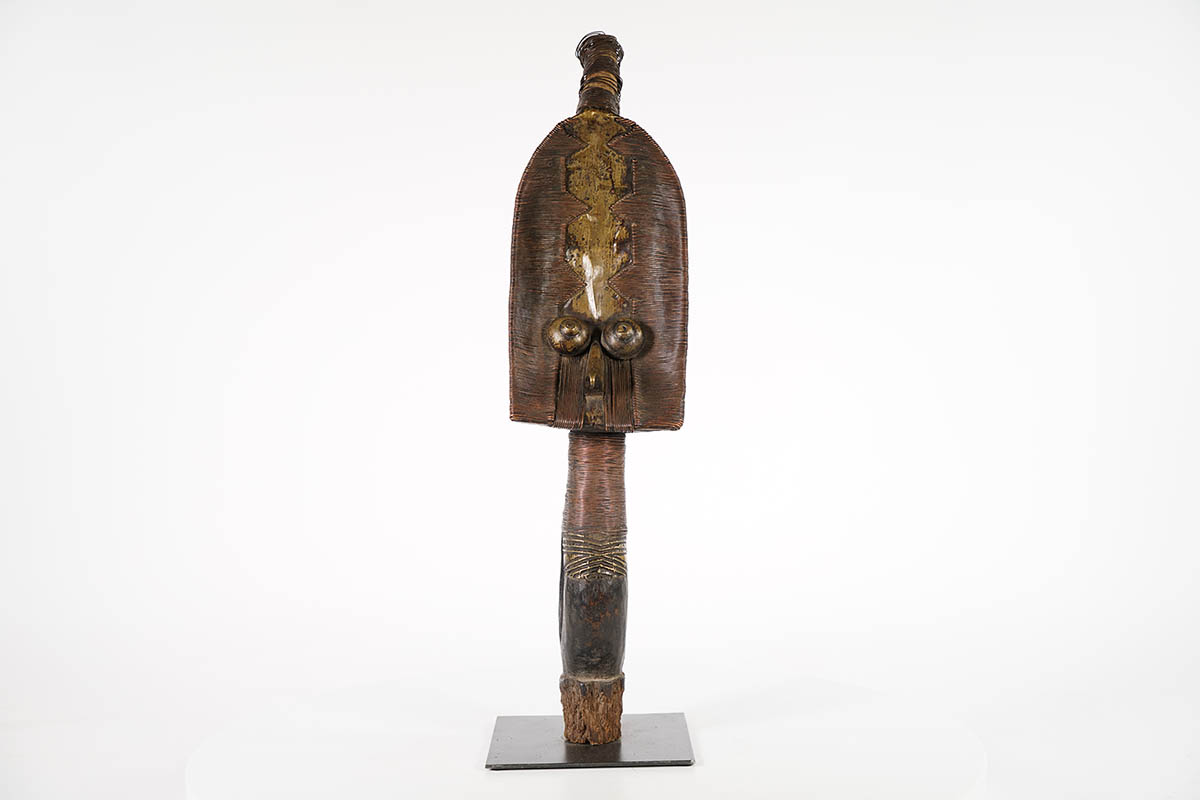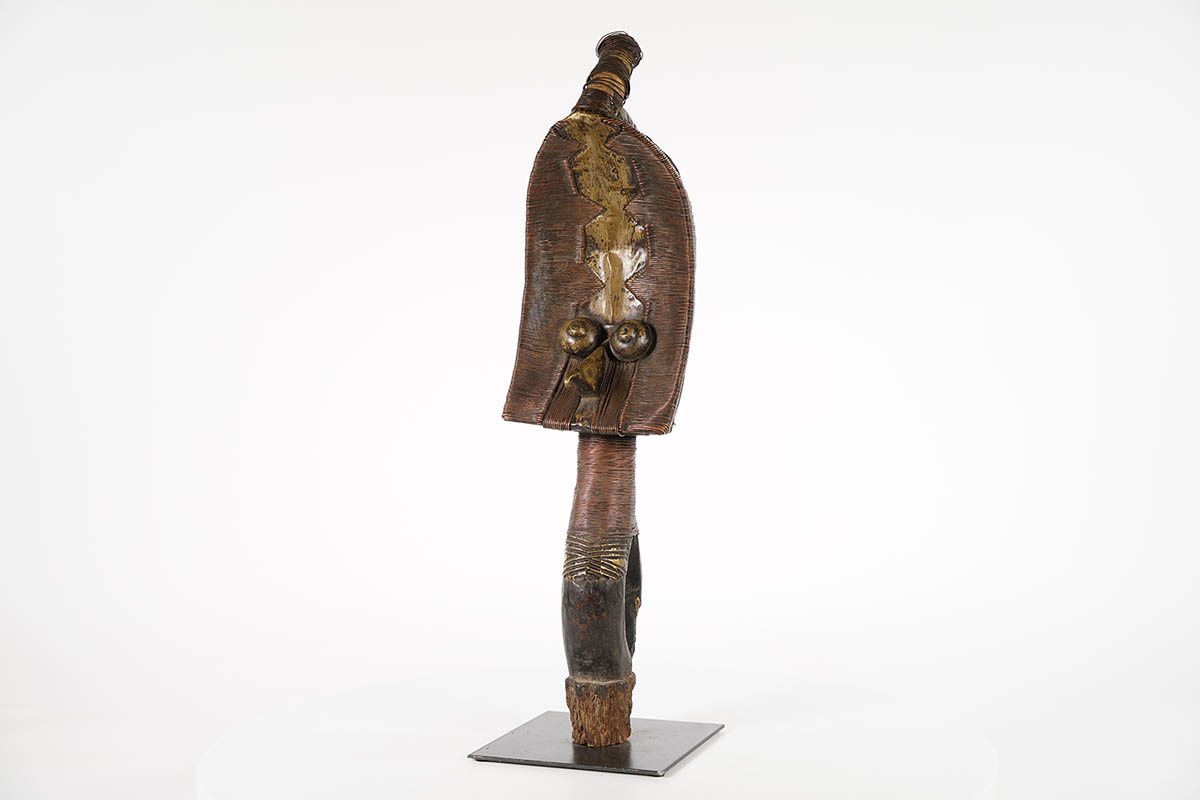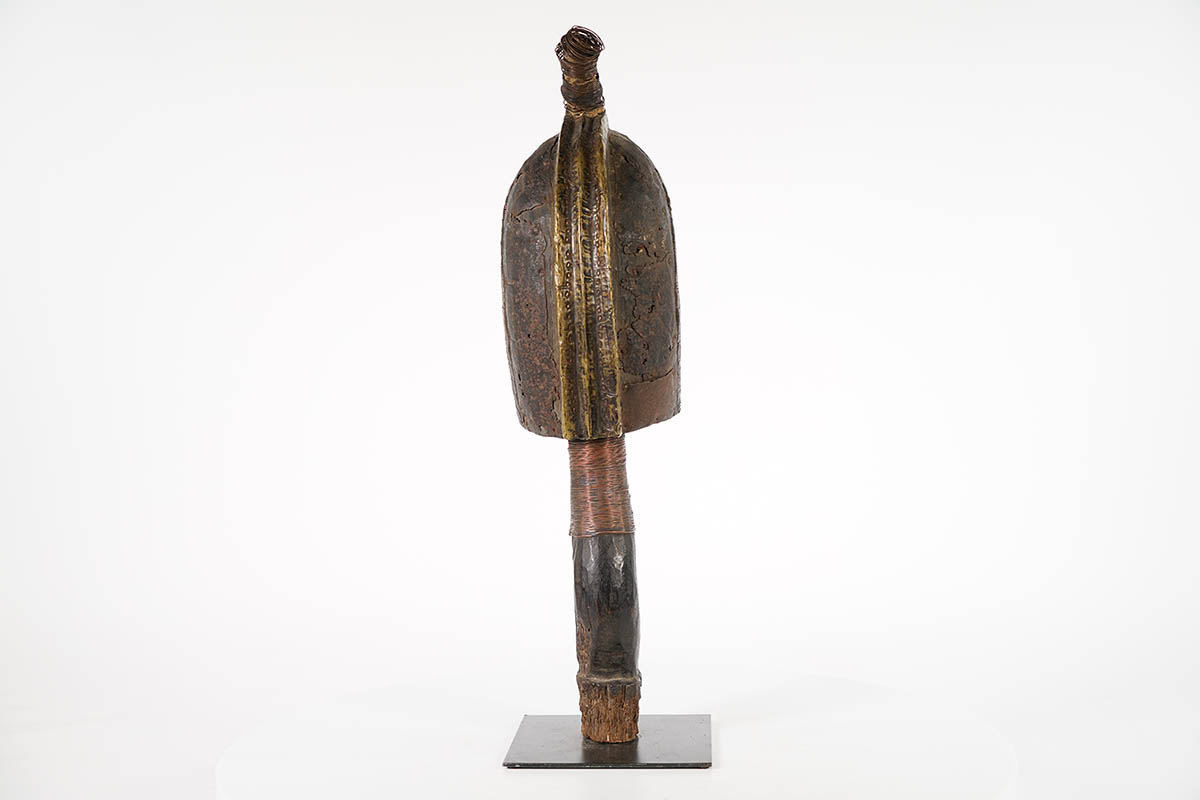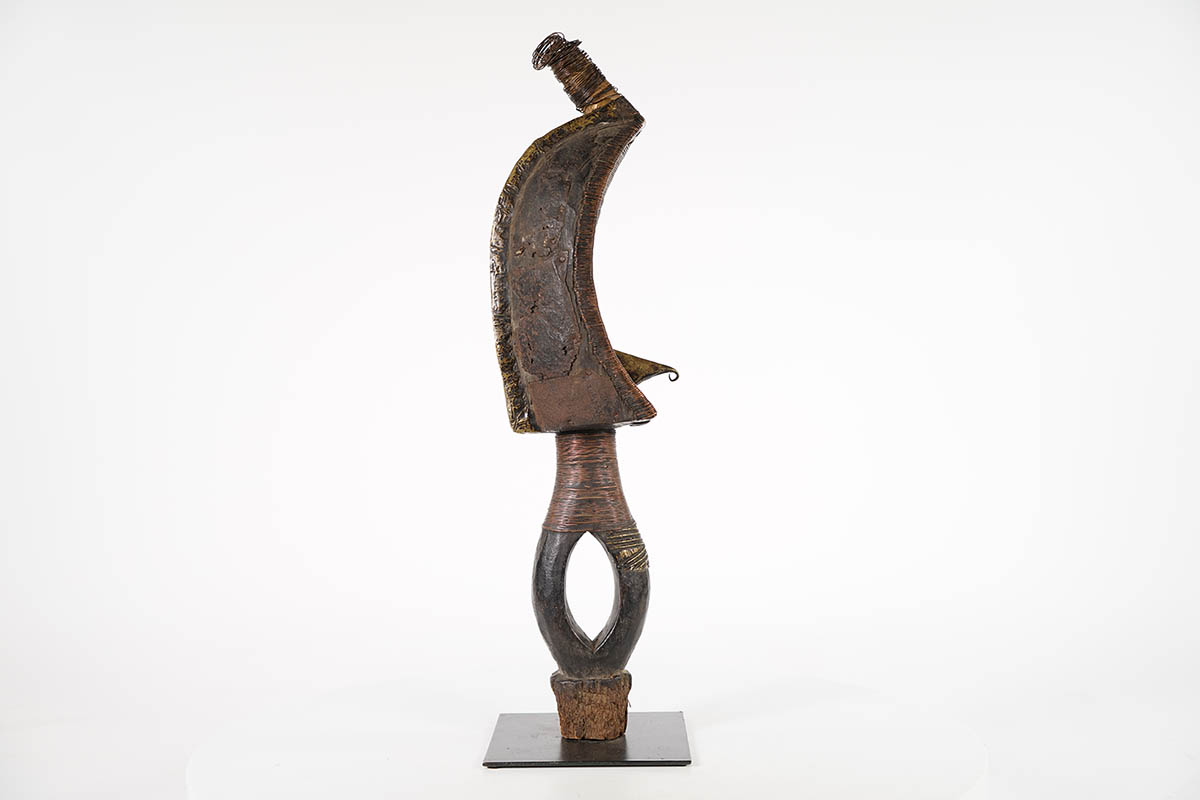The Mahongwe are a branch of the Kota peoples who live in the extreme northeast of Gabon, near the Republic of the Congo border. Their figures can be identified by the truncated almond-shaped face and metal wires that encompass the face. This figure measures 21 inches tall and weighs 3 pounds. The wire on top has begun to unravel and there is wear and tear – please inspect photos.
Mahongwe Reliquary Statue on Custom Base 21″ – Gabon – African Art
$450.00 $225.00
Sold

| Type of Object | Figure, statue |
|---|---|
| Country of Origin | Gabon |
| Ethnicity | Mahongwe |
| Material | Wood, pigment and metal |
| Approximate Age | Unknown |
| Height (Inches) | 21" |
| Width (Inches) | 5" |
| Depth (Inches) | 4" |
| Weight (Pounds) | 4 lbs |
| Overall Condition | metal is beginning to unravel on top and wear and tear throughout. |
Tribe Information
About the Kota People
“Living on the eastern side of Gabon, on the frontier with the Republic of Congo, the Kota people comprise a number of small tribes such as the Mahongwe, the Sango, the Obamba and the Shamaye, who all practice similar ceremonies. It is though they migrated southwards during the 18th century and settled in the upper valley of the Ogooué River, in a forest environment. Their main resources come mostly from hunting and agriculture.
Historically, the Kota left their dead unburied in the forest, far from the village. Under the influence of neighboring tribes, they began to bury their dead. Chiefs were always buried, but often their bones (especially their skull) were later exhumed and placed with magical objects (shells, seeds, fruits) in a bark box or a basket called a Bwete, in which a carved figure was inserted.
These reliquary baskets were kept for generations, but during the 20th century, when religious beliefs changed, they were abandoned or even destroyed. Between 1940 and 1964, a movement referred to as the ‘culte des demoiselles’ was responsible for the destruction of most of these traditional objects. This movement was based on the idea that mimicking Western values and lifestyles, as well as abandoning the old cults and idols, would help them to gain what they perceived as western power.”
Source:
Baquart, Jean-Baptiste. The Tribal Arts of Africa. New York: Thames and Hudson Inc. 1998. Print.






